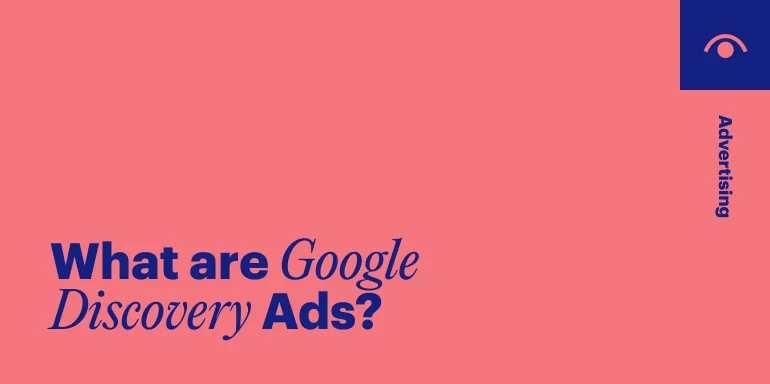Google Discovery Ads use a combination of captivating visuals and personalized targeting to generate top-of-funnel demand and drive engagement to your brand.
Google Discovery Ads defined
With Google Discovery Ads, you can reach potential customers casually browsing on popular Google-owned platforms such as YouTube, Gmail, and the Discover feed.
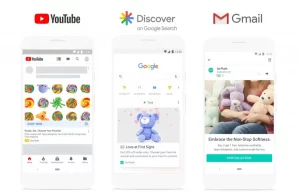
- Google Discovery Ads’ image-based format provides a rich and immersive experience, making them stand out in the crowded online landscape. The targeted approach of the ads ensures that they are shown to individuals likely interested in a product or service they promote.
- Google Discovery Ads have a broad reach. This extensive visibility allows businesses to connect with potential customers at various stages of their online journey.
Google Discovery ad types
1. Responsive display ads
Responsive display advertising, or simply display ads, uses text, images, animation, videos, and other creative elements to promote products or services. The ads automatically adjust their size, appearance, and format to fit available ad spaces.

Google utilizes machine learning to optimize and enhance ad performance by selecting the most efficient combination of assets. Display ads are featured on the Google Display Network, a vast repository of over two million websites, videos, and apps. The network has a reach extending to over 90% of global internet users, ensuring that your ads can be strategically placed where your target audience spends time online.
2. Discovery ads
The visually rich, mobile-first ads appear in multiple Google feed environments. The intent is to catch users when they’re open to discovering new products or services.
These ads appear across three of Google’s most popular feeds – on the Discover section of the Google app, YouTube home feed, and Gmail’s Promotions and Social tabs. The reach of these platforms is vast, with the Discover feed alone reaching up to 800 million users globally.

3. Uploaded display ads
Advertisers can create and upload these ads themselves. Offering advertisers more control over the design and feel of the ad allows for greater brand consistency.
These ads also appear within the Google Display Network, meaning they can appear on many websites, in apps, and in videos. Advertisers can choose specific sites or pages within the GDN for their ads to appear, targeting their audience more directly.
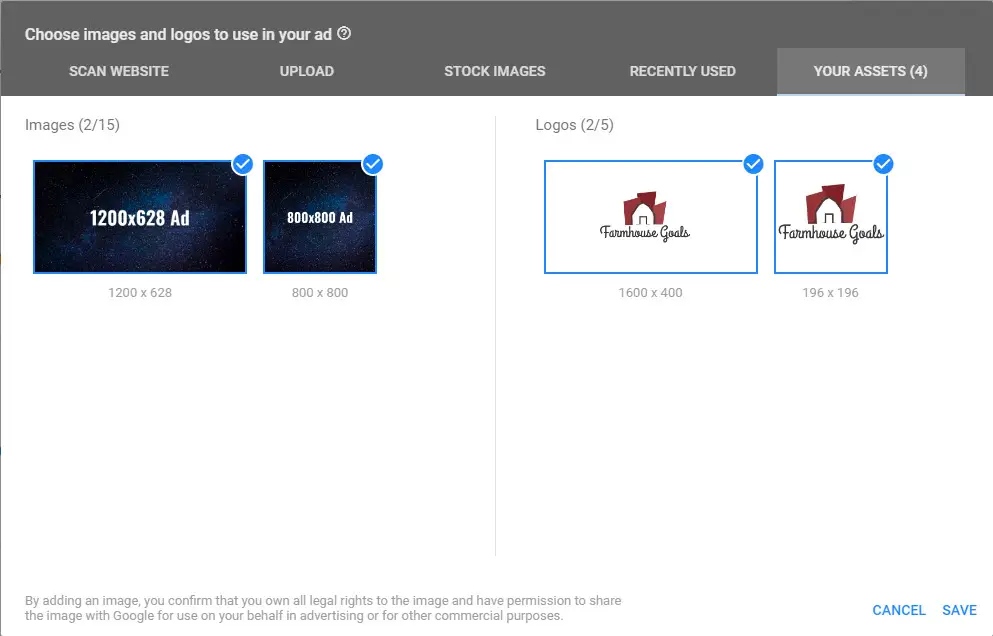
Display Ads vs. Google Discovery Ads—what’s the difference?
1. Ad placement
Display Ads have a broad reach, while Discovery Ads have a more focused placement. They are limited to showing on three primary platforms: YouTube, Gmail, and the Google app. Although this may seem restrictive, these platforms have an extensive user base—YouTube alone had around 2.5 billion active users by October 2023.
2. Audience targeting
Display Ads allow for content targeting (based on keywords, topics, or placements) and audience targeting (based on demographics, interests, or remarketing lists).
Discovery Ads only allow for audience targeting and offer limited campaign settings. This means you can reach users based on their online behavior and preferences, but you cannot target specific keywords or content.
3. Intent
Discovery Ads aim to reach people in a discovery state of their consumer journey—ready to discover and engage with new products or services. They are effective for driving consideration and conversions.
Display Ads are excellent for general awareness campaigns. They allow for reaching a broad audience and increase visibility for your brand, product, or service.
4. Ad appearance
Discovery Ads are designed to be rich and immersive. They can be displayed as a single image or a carousel of images, providing a captivating, mobile-first ad experience.
Display Ads mostly follow a more traditional format of image or text ads.
The difference between YouTube ads and Google Video Discovery Ads
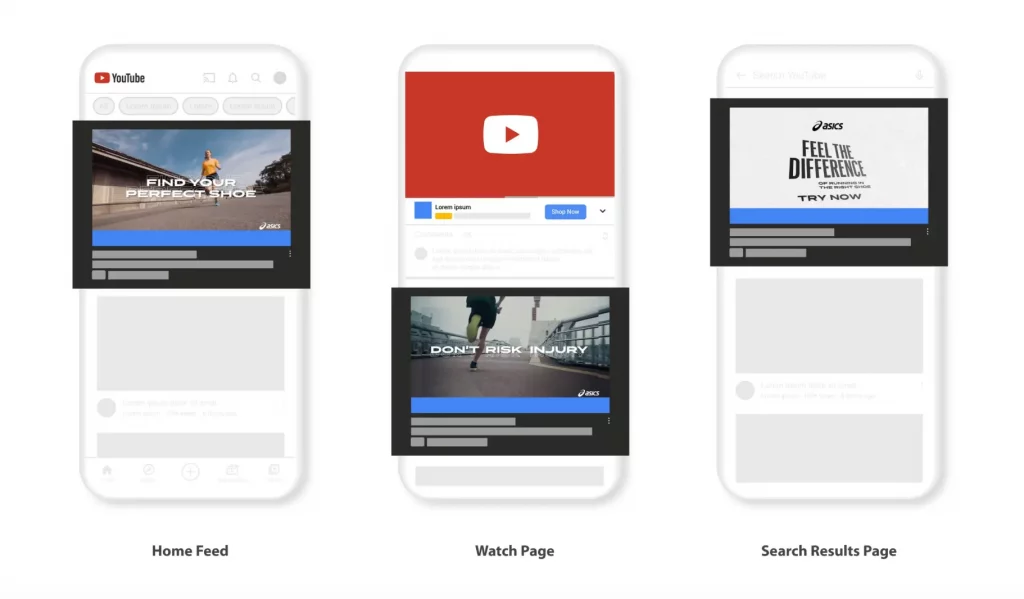
1. Placement
YouTube Ads can appear before, during, or after a video (known as pre-roll, mid-roll, and post-roll ads) or as sponsored cards on the YouTube homepage. This allows advertisers to reach viewers at different stages of their viewing experience.
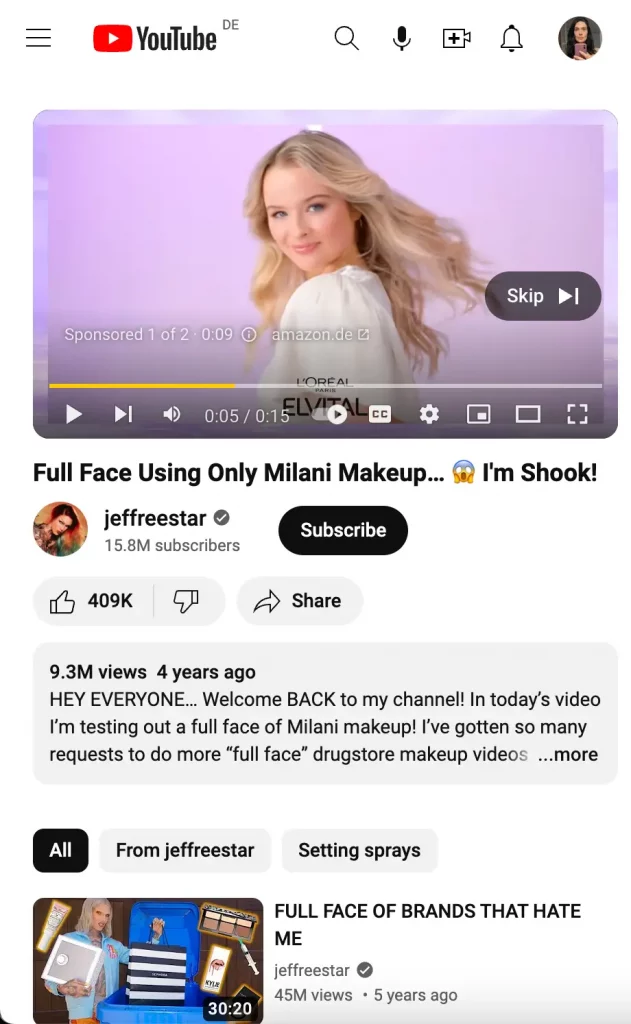
On the other hand, Video Discovery Ads are strategically placed alongside YouTube content that aligns with the audience’s interests. These ads appear in places where users discover new videos, such as the YouTube Home, Watch, and Search feeds.
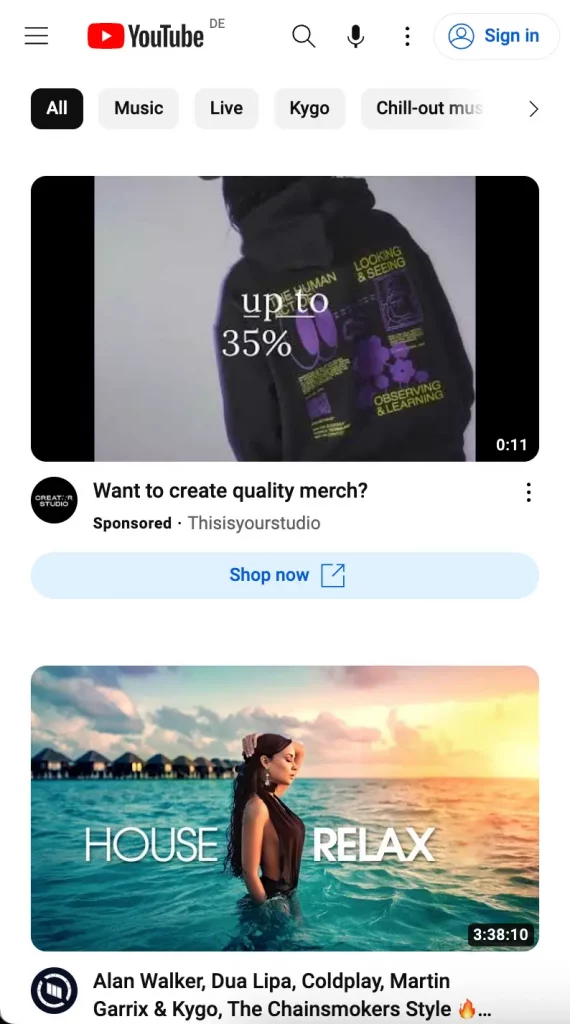
2. Appearance
YouTube Ads come in several formats, including skippable in-stream ads, which viewers can skip after 5 seconds; non-skippable in-stream ads, which viewers must watch before they can continue to watch their video; and short bumper ads, non-skippable ads up to 6 seconds long.
Video Discovery Ads, however, look almost identical to ordinary video placements. They consist of a thumbnail image from your video with some text. When viewers click on the ad, they’re taken to the watch or channel page to view the video rather than being redirected to an external website.
3. Intent
YouTube Ads can be used for brand awareness, driving consideration, or prompting action (such as website visits, calls, or purchases).
In contrast, Video Discovery Ads are specifically designed to help advertisers acquire new customers. They target users actively searching or browsing videos on YouTube, making them ideal for reaching potential customers in the discovery phase.
Google Discovery Ad Examples
1. Ted Baker
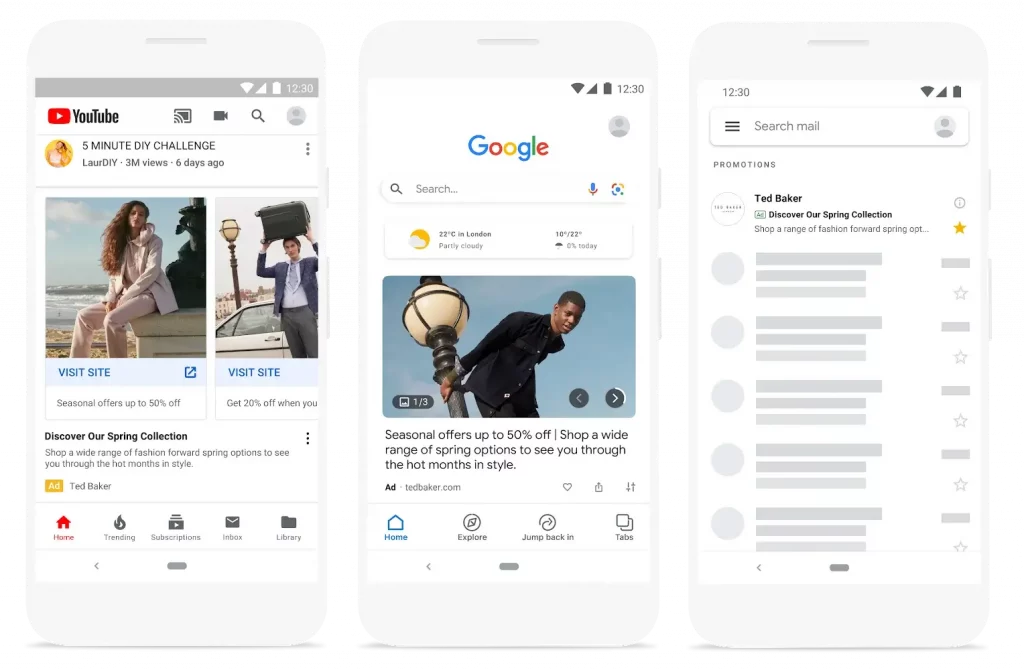
During the summer of 2020, the UK fashion brand Ted Baker leveraged its social ads creative assets to run Discovery ad campaigns, engaging with individuals who had previously visited their website and those interested in clothing.
This strategic approach led to remarkable outcomes, with Ted Baker experiencing a substantial 70% increase in revenue and a notable 62% rise in ROAS in less than a year.
2. Adidas
Adidas ran a multi-step campaign that included a sequence of several YouTube TrueView ads and hero films. Following the campaign, Adidas saw a 33% lift in awareness, 20% in ad recall, and 317% in product interest.
In one of the most recent ads, there’s no mention of shoes, trainers, or clothes. It’s clear what the product is and who it’s aimed at from the stylized square image and snappy ad copy. Placing this ad on the YouTube Home feed also helps Adidas reach its target audience and put its imagery to good use.
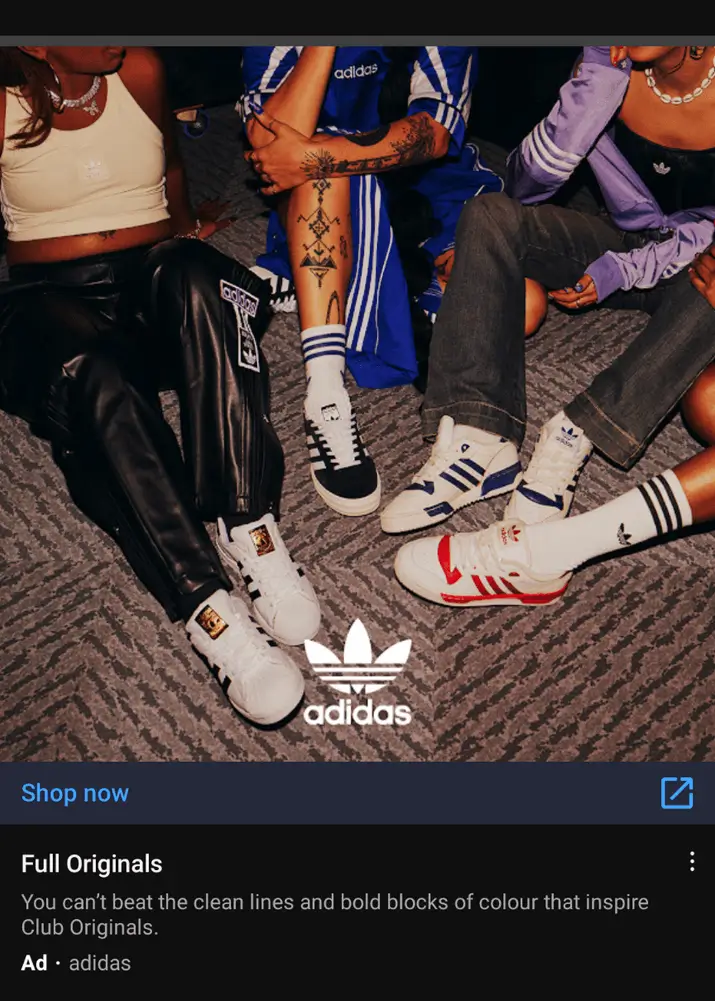
Where to run Google Discovery Ad campaigns
1. The Google Discover Feed
The Google Discover feed is a feature on the Google app and Google.com mobile website that offers users personalized content based on their interests.
Discovery Ads placed on the Discover Feed blend seamlessly with the curated content, making them more likely to catch users’ interest.
2. YouTube
YouTube is another major platform where Discovery Ads can show up. These ads appear in several locations within the YouTube app, including the home feed and ‘Watch Next’ streams.
When users are browsing through videos or watching content, Discovery Ads can pop up, attracting users who are already engaged and open to discovering new content.
3. Gmail
Discovery Ads can appear in the Gmail app, specifically within the Promotions and Social tabs. Users can see Discovery Ads alongside other promotional content when they check their emails.
This can be particularly effective for reaching users in a more professional context or promoting deals, offers, and sales.
Google Ads Specs
People come to the Discover feed, YouTube home feed, and Gmail feed to browse and discover new content that aligns with their interests. To ensure ads feel authentic and relevant, Google recommends selecting high-quality imagery that tells your brand’s story. In addition, all ad content must adhere to Google Ads Policy and Personalized Advertising Guidelines.
Google Ads that include any of the following will be disapproved:
- A CTA button in the image (or any visuals that mimic hyperlinks or look like clickable elements)
- Clickbait (intended to entice a user to click through by suggesting they’ll find out something incredible, outrageous, or sensational)
- Blurry, low-quality images
- Poorly cropped images
- Images oriented incorrectly
Here are the specifications for different types of Discovery ads:
| Ad Type | Headline | Description | Images | Image Dimensions | Landscape Image Ratio | Square Image Ratio | Portrait Image Ratio |
| Standard Discovery Ads | Up to 5 headlines (Max. 40 characters each) | Up to 5 descriptions (Max. 90 characters each) | Up to 20 images | Min. 1200 x 628 pixels for landscape, Square and Portrait sizes not specified | 1.91:1 | 1:1 | 4:5 |
| Carousel Discovery Ads | 1 headline for the ad set + 1 headline for each card on carousel (Max. 40 characters each) | 1 description (Max. 90 characters) | Up to 10 images (Shown in the order uploaded) | Min. 1200 x 628 pixels for landscape, Square and Portrait sizes not specified | 1.91:1 | 1:1 | 4:5 |
Things to consider:
- All images should be in .jpg or .png format
- Use high-quality images relevant to your ad content for better results
- Text cannot take up more than 20% of the image
Remember that these are basic requirements, and optimizing your ads for the best performance is always important. This could involve testing different headlines, descriptions, and images to see what resonates most with your audience.
What are the Google Discovery Ads best practices?
Define the right budget for your goals
Google suggests setting a daily budget at least 10 times that of your target CPA goal. This allows ample campaign ramp-up time and data gathering, providing your campaign with the necessary resources to learn and adjust for optimal performance.
Use high-quality, relevant images
The quality and relevance of your images can make or break your ad’s success. High-quality images that effectively showcase your products capture the audience’s attention and clearly communicate your brand’s value proposition. Remember, your visuals are the first thing potential customers see, so make them count.
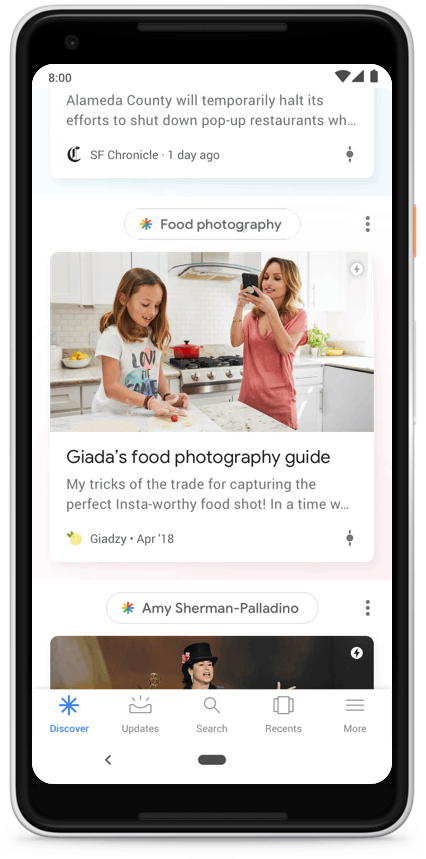
Don’t jump in with optimizations too soon
Patience is vital when it comes to optimizing your campaigns. It’s tempting to jump in with tweaks and changes as soon as the campaign goes live, but it’s best to allow the campaign to gather sufficient data before making significant changes.
This data-driven approach ensures that any optimizations you make are informed and effective.
Use Smart Bidding to optimize performance
Smart Bidding can significantly enhance the results of your Discovery ads. Strategies such as Target CPA, Target ROAS, Maximize conversions, and Maximize conversion value can help you meet your campaign goals more efficiently.
Smart Bidding uses advanced machine learning to optimize bids for every auction, helping you get the most out of your budget.
3 Things to keep in mind when running a Google Discovery Ads campaign
When evaluating if Google Discovery Ads apply to your campaigns, consider the following points:
1. Google Discovery Ads are a separate campaign type
First, you’ll need to run a separate Google Discovery campaign, which indicates just how important Google thinks these ads are. They are similar to Universal App campaigns in that advertisers upload their creative assets and some copy ideas, and Google automatically handles optimization and delivery through machine learning.
Since Discovery ads live primarily in feeds and not on search (more on this later), search intent doesn’t play a role. However, your targeting strategy will be different because you’re losing some commercial intent. Custom intent audiences and in-market audiences are great options for this type of campaign because they’re highly focused on people in the discovery and research phase of the buying cycle.
In addition to a different targeting strategy, Discovery Ads also require you to take a different creative approach. Although these ads should show up in response to a user’s interests and behavior, there’s still no actual search intent—so be mindful of where your audience is on their buyer journey when creating content.
2. Google Discovery Ads have no real search intent
Leaning into the discovery mindset is critical to capitalizing on Google Discovery campaigns, meaning advertisers are more pressured to create persuasive headlines, descriptions, and visuals.
Similar to Facebook Carousel Ads, Discovery Ads allow advertisers to display one or more images that showcase their product or service in a slideshow format on the Discover feed, among other locations discussed above.
While this might seem like Google’s attempt to partake in the news feed advertising game, Discovery Ads go much more profound. Users on the Discover feed are in learning and discovery mode, so it makes sense for advertisers to show ads that appeal to that mentality.
But you need more than just creating a carousel ad to guarantee you’re fully leaning into the discovery mindset, so you’ll also want to produce compelling and exciting content.
Rather than taking a direct selling approach, start by addressing common pain points and selling points. As you determine certain concepts that produce most of your campaign results, you can refine your copy and visuals around those specific points to appeal to new and relevant audiences.
Remember, these are Discovery Ads, so the purpose isn’t to sell a product but to get people excited about discovering your business.
3. The success of Discovery Ad campaigns depends on machine learning
The whole point of Google Discover is that algorithms identify what users want and deliver it to them. Discovery Ads follow the same approach.
When setting up Google Discover ads, you’ll enter a landing page URL, at least one image, a logo, and up to five headlines and five descriptions. From there, Google’s machine learning serves the best combinations across the most relevant and appropriate placements—or where your audience spends most of their time.
Depending on users’ account settings, Google may use web/app activity, device targeting, language targeting, and location to personalize content (largely AMP enabled). For example, this ad was likely on my YouTube feed because of my recent interest in OpenAI’s ChatGPT technology:
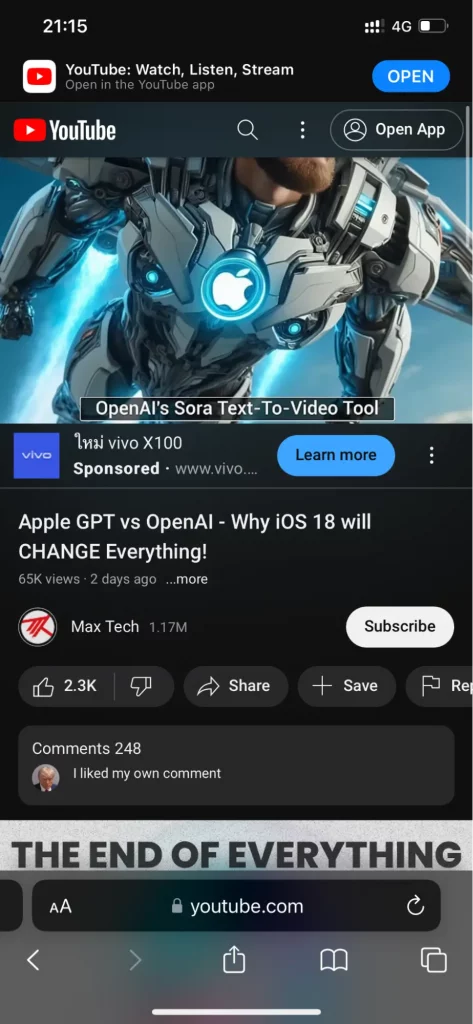
This one is in the Social tab of Gmail feed because I recently visited Hootsuite’s website:
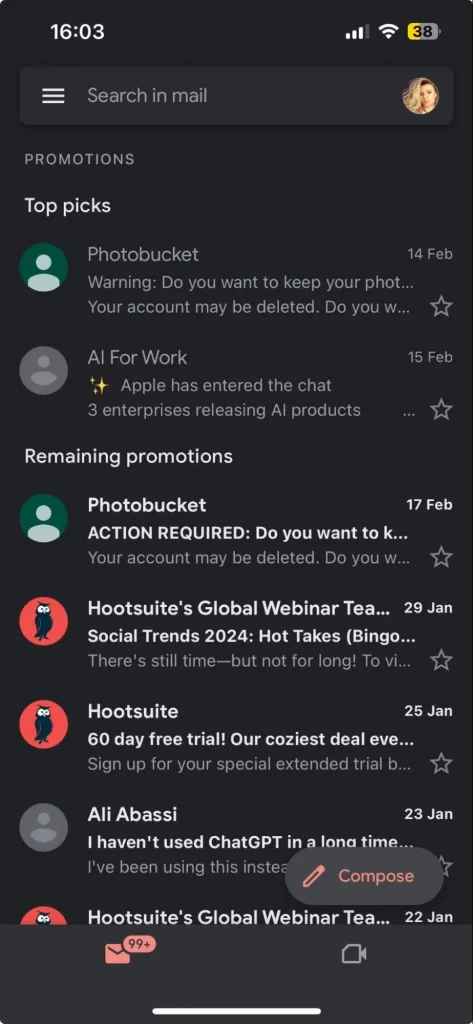
Just like Google’s Responsive Search Ads, this is yet another way Google is automating the ad optimization process to reach more relevant users with highly relevant creative and messaging.
Since Google’s algorithms have already been learning about what content individual users respond to most, this should mean higher ad click-through and conversion rates.
Reach more audiences with Google Discovery Ads
Google Discovery Ads empower marketers to reach their target audience across Google’s vast ecosystem in a visually engaging and relevant way. Whether increasing brand awareness, driving traffic, or boosting conversions, Discovery Ads can help you achieve your marketing goals effectively.
Establishing personalization and ad-to-page relevance helps increase Discovery ads’ ROAS even further. Instapage’s AdMap® feature allows you to sync your ad account with Instapage to see your campaigns, ad groups, ads, and corresponding landing page experiences.
You can then connect page experiences to ads you’ve already created or build new personalized pages from within the feature and use AI-generated content for different audiences and ad groups.
Want to see all this in action? Sign up today for a 14-day free trial and experience the difference yourself. Your journey towards more efficient and effective digital marketing starts here.

Try the world's most advanced landing page platform with a risk-free trial.
